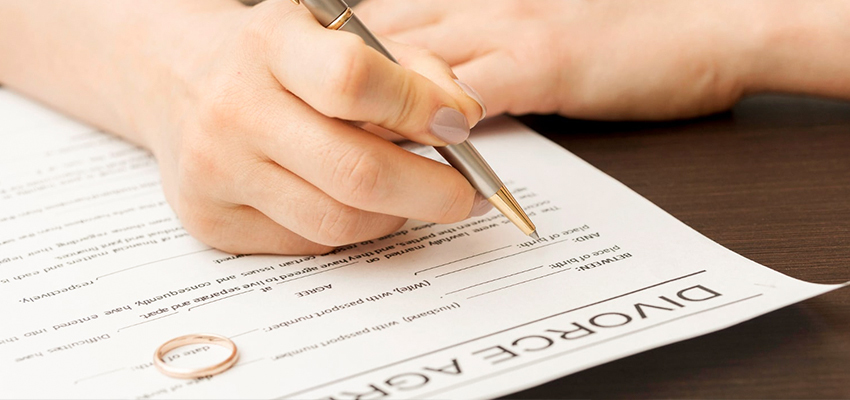How To File For A Divorce In Edmonton – Take It One Step At A Time
The technical procedures involved in the divorce process may be overwhelmingly problematic for many couples. Usually, people are not strong enough to handle the emotional stress and the technical complexities of divorce concurrently. For this reason, we believe you should request legal representation services from a reputable family lawyer. Although it is not mandatory to hire a divorce lawyer, it would, nevertheless, prove beneficial to at least consult one.
Family and divorce lawyers are well-acquainted with the technicalities of the divorce process and can guide you accordingly about your rights and responsibilities. Besides helping with the preparation of the divorce documentation and legal representation, they can also diligently guide you through the pre-divorce and post-divorce phases.
As a starting point, we present you with this blog with the general steps involved in filing for and obtaining a divorce in Edmonton. However, we understand that the affairs and eventually of each couple’s needs will differ according to their personal circumstances.
Steps Involved When Filing For A Divorce In Edmonton
Generally, divorce in Canada is governed by the Federal Divorce Act. However, its administration will vary according to the province you reside in. Although we will be discussing divorce in Edmonton, it would be better to take a bit of a general approach to the subject.
Step 1 – Make Up Your Mind
The first step is to ensure that you clearly understand what you want. Before filing for a divorce, you must be sure that you want it. The process will become even more cumbersome if you are unsure of your decision. Thus, first, ask yourself whether you really want a divorce. If the answer is yes, proceed to the next step.
Step 2 – Consider Your Residency Requirements
Before filing for a divorce, you need to ensure that you meet the necessary divorce filing prerequisites of your province. In the case of Alberta, there is a residency requirement of at least one year. If you do not have the latter, you might have to file your divorce in another province.
Step 3 – Set The Grounds
In this step, you need to ask yourself why you want the divorce. Is it due to your partner’s disloyalty or cruelty? Or, do both of you feel that you can no longer stay together? The answer to these questions will determine whether this will be a fault or a no-fault divorce. Regardless of the case, you must be able to demonstrate an irreversible breakdown of your marriage.
If it is a no-fault divorce, you will need to show that you have stayed separate from your spouse for at least a year. In the case of fault divorce, you will have to prove that your partner either committed adultery or has been mentally or physically cruel to you.
Step 4 – Agree On The Terms (If Possible)
The next step is to agree on the terms of the divorce. At this point, you will decide whether you would want to opt for an alternative dispute resolution process such as requesting mediation services. If you and your spouse agree on the terms, the divorce will be uncontested. If you disagree on certain aspects like division of property or child guardianship, the divorce will be contested.
Step 5 – Prepare The Documents
This step requires utmost diligence and care. Proper and adequate documentation can speed up this painful process, while the opposite may cause numerous delays. Thus, we would suggest that you request a reputable family lawyer to help you prepare your documents .
Step 6 – File The Application
You will then file a Statement of Claim for Divorce with the Clerk of the Court of Queen’s Bench. The latter will mark the start of the divorce process officially.
Step 7 – Officially Serve Your Spouse With A Copy Of The Divorce Papers
The next step is to officially notify your spouse about the fact that you have initiated the divorce process. Depending upon where your spouse is, the court will decide on a certain response period. If your spouse is in Alberta, they will have 15 days. However, if your spouse is in another province, they will have 40 days. In case of your partner’s absence from the country, the court will decide the period.
Step 8 – Wait For Your Spouse’s Reply
Once the latter is done, you will have to wait for your spouse’s response patiently.
Step 9 – Wait For The Divorce Order
Depending upon your spouse’s response, there might be a court hearing. Regardless of the fact, the court will only issue a divorce order once all the documents have been adequately reviewed.
Step 10 – Get Your Divorce Certificate
Once the judge is satisfied with everything and has set additional terms regarding guardianship and other matters, you will receive a divorce order. Soon afterwards, you will get a divorce certificate.
About Us
When it comes to service excellence and professionalism, The Divorce Company makes no compromises. Our team of professionals across various fields practice due diligence and care while handling every major or minor client concern. Contact us to learn more.



